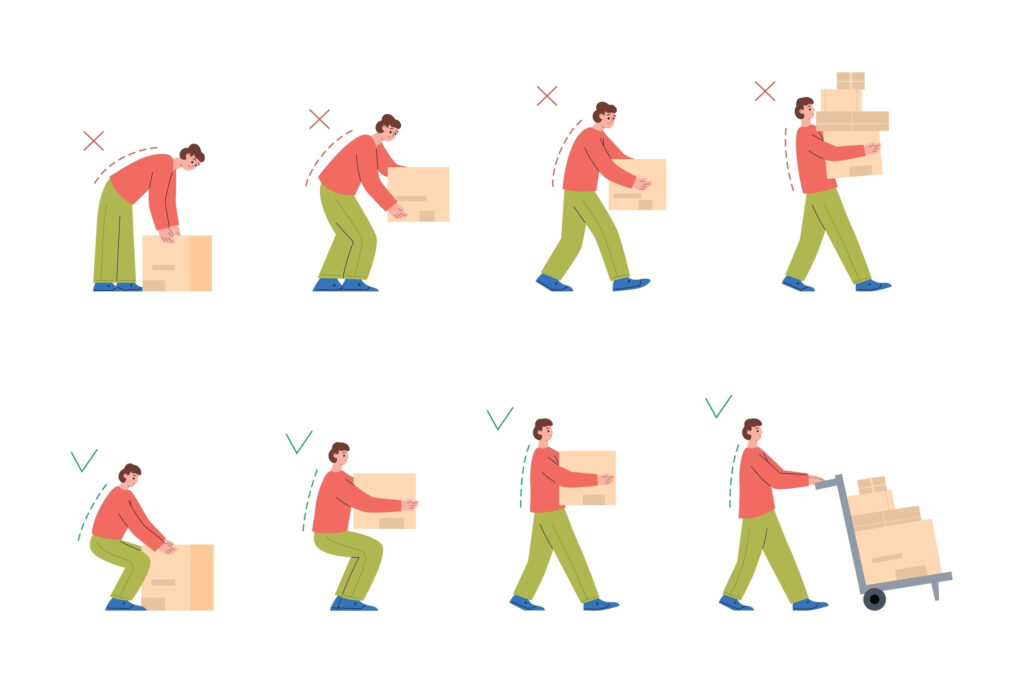
The Canadian Centre for Occupational Health and Safety (CCOHS) has guidelines for safe carrying and lifting in the workplace to help prevent injuries. Workers should follow these guidelines when carrying or lifting objects:
- Assess the load: Determine the weight, size, and shape of the object you will be carrying or lifting. If the object is too heavy or awkward, get help or use a mechanical aid, such as a dolly or forklift.
- Keep the load close to your body: Hold the object close to your body, as close to your center of gravity as possible. This will help you maintain balance and control.
- Use your leg muscles: Bend your knees and keep your back straight and as vertical as possible when lifting. Avoid bending at the waist or twisting your body.
- Hold the load securely: Use a firm grip on the object you are carrying or lifting, and keep it balanced.
- Take short breaks: If you need to carry or lift a heavy object for an extended period of time, take frequent breaks to rest and stretch.
- Wear proper clothing and footwear: Wear clothing and footwear that allow you to move freely and maintain your balance, such as shoes with non-slip soles.
It’s important to follow these guidelines to help prevent back injuries, which are one of the most common injuries resulting from improper lifting techniques.